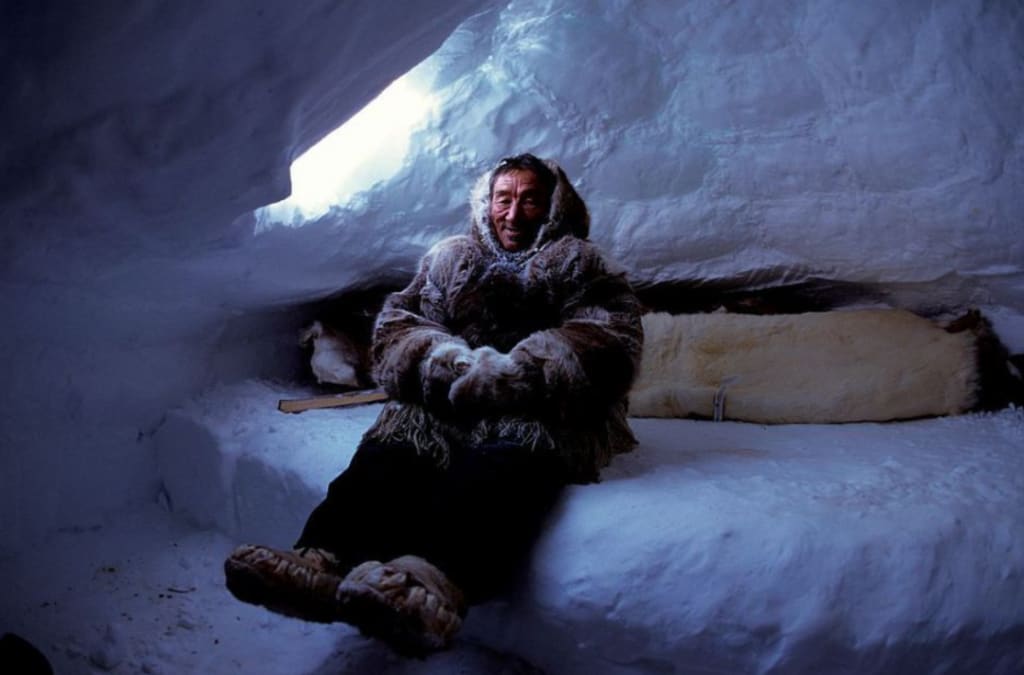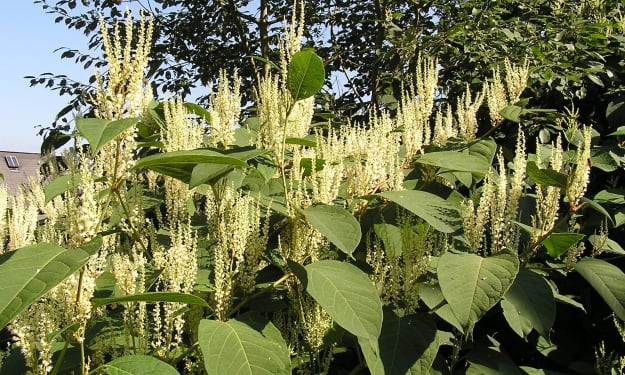
Why don't the Inuit, who live in ice and snow, feel cold when they live in igloos at minus 50 degrees Celsius?
What's even more amazing is that they actually lit a fire in the house. Wouldn't a house made of ice and snow melt?
If we want to understand the amazing houses of the Inuit, we have to understand how they were built.
After all, the Inuit have been living this way for thousands of years, so there's got to be some science to it that we haven't figured out.
An Inuit igloo
Inuit igloos are not actually made of ice, they are made of snow.
The first step is to dig a big hole in the snow, about half a man deep. The snow is then compressed into bricks, which are stacked into round vaulted houses, and the gaps are filled with snow.
The end is to move everything in and start living in igloos.
In general, an Inuit igloo lasts about two months, which is a long time for an Inuit who has no place to live.
So, don't you get cold in an igloo at -50 ℃?
Someone has measured the temperature inside the igloo, and while it's minus 50℃ outside, it's about minus 20℃ inside.
It is obvious that the igloo has a certain insulation effect.
Why can a house made of snow keep warm?
First, the igloo is insulated from the wind. Wind blowing over surfaces, especially the human body, takes away much of its heat.
The walls of igloos are all more than 50cm thick, which can withstand the wind and prevent being carried away by the temperature.
Second, snow does not absorb heat without melting.
As the saying goes: "Snow is not cold, snow is cold!" The reason is that snow absorbs heat as it melts.
Snow doesn't melt until it reaches 0 ° C, and Inuit live in areas where it's below freezing all year long, so it's rare for snow to melt and absorb heat.
Third, the wall made of snow still has the function of reflecting heat.
People are actually a little heat source, and our bodies radiate heat outward.
When you live in an igloo, the heat you emit is reflected off the snow walls, and some of it even comes back around your body, which makes it hotter inside than outside.
However, an igloo's insulation is relative to the outdoor temperature, and wouldn't the Inuit make fires in their igloos melt?
Ice is not
Why don't Inuit igloos melt because of a fire inside?
First of all, Inuit fire is not what we think of as a fire. Instead of burning wood, they light an oil lamp.
The oil in the lamp, made from the fat of polar animals such as seals and whales, is precious to the Inuit, who do not use it for cooking, but only for lighting.
So, the heat from the grease and so forth, there's no way to heat the igloo enough to melt.
Secondly, the igloo is not completely sealed. There is a certain gap on the top of the igloo.
Even if there are too many people in the igloo, the Inuit will cut a hole in the roof.
This is because the Inuit breathe, too, and if they don't, the air in the igloos becomes stale for a long time, especially when the tallow burns.
Hot air is less dense than cold air, so it will run up and float away through cracks or holes in the roof. It won't stay in the igloo.
In other words, the Inuit don't want their igloo to get too hot. They want it to stay a few degrees below zero at all times.
Because once the snow melts, the igloo can no longer be used. For the Inuit, a few degrees below zero isn't much of a problem.
In fact, the construction of the Inuit igloo is so simple that it doesn't even require great construction skills. The materials used to build the igloo are found everywhere in the Arctic.
Many hotels near the poles are also offering igloo Tours to experience Inuit life.
For scientists studying the Inuit, we can learn a lot more from igloos than we might think.
The use of igloo
Learning about the Inuit igloo is a great self-help for those who are used to polar expeditions.
Many explorers thought their tents were stronger than the Inuit igloos, but when compared, the tents did not withstand the storm as strongly as the igloos.
The reason why people think tents are more powerful is that the materials used in tents are very advanced, which can effectively keep out the cold, and even make it waterproof and snowproof.
But when we build a tent, we put it on the ground, and we use pins that go into the ground.
This is equivalent to the tent "floating" on the ground. Inuit igloos are made by digging a hole in the ground, which means their igloos are not tall.
Coupled with the fact that the walls of snow used in igloos are very thick, this makes igloos somewhat stronger than tents.
Scientists also mention that igloos have another implication for use in outer space.
There are many planets in the universe that are frozen. They are very cold and covered with thick snow and ice, such as Europa and Titan.
If humans ever landed on one of these planets, they could build an igloo out of what they could find.
Because wearing thick spacesuits, there is no need to worry about how cold the igloo is, just can be used to rest and even do some experiments, this may be the earliest base.
Of course, this is just a scientist's idea, but the most popular use of igloos is in high-latitude tourism.
Inuit igloos have a time limit, too, because the snow slides under gravity, and in about two months, the igloos collapse.
But that's not a big deal for the Inuit, who build igloos so fast that a person can rebuild one in an hour.
It costs the Inuit almost nothing to make an igloo, but the Inuit don't always live in an igloo.
Igloos are temporary stops for the Inuit, who choose to build them some distance from their hunting sites during the hunting season.
Their favorite seal hunt, for example, involves staking out a fixed spot every day, and it's possible to go a month without a seal coming.
Igloos are a solution to their housing, allowing them to stay in one place for long periods of time.
Inuit life
If you look closely at the Inuit faces, they look more like Asians.
The Inuit, a Mongol race, followed the Indians into North America.
Because the Inuit arrived late, did not seize the rich water and grass of the hinterland of North America, but was driven to the Arctic region by the Indians.
In a tough environment, the Inuit body has adapted to the cold Arctic.
For example, the Inuit can eat meat for long periods of time without developing cardiovascular disease.
We should know that we pay attention to meat and vegetable collocation, if only a single meat and do not eat fruits and vegetables, it is possible to get fat, and then suffer from three high.
But vegetables and fruit were not possible where the Newts lived. They did not even have firewood. Their food was raw meat.
Most people would get sick if they ate this way, but for the Inuit, the diet gave them a stronger body.
We would think a room at 20℃ would be just right, but if you put an Inuit in it, he might sweat like a pig.
The Inuit get all their vitamins from raw meat, not just from vegetables and fruits, but from raw meat as well.
It's just that cooking destroys the vitamins that come with meat, so for people who eat cooked food for a long time, we need to get the vitamins we need from fruits and vegetables.
Inuit don't cook, so they don't destroy the vitamins in their food.
Although the Inuit are physically strong enough to withstand the polar cold, the harsh conditions make their life expectancy very short and the survival rate of their newborns very low.
In some places, the Inuit have chosen to give up this nomadic existence and live a modern life in arranged villages.
Only a small number of Inuit still adhere to the traditional custom of building an igloo for themselves in the light of the aurora.





Comments
There are no comments for this story
Be the first to respond and start the conversation.